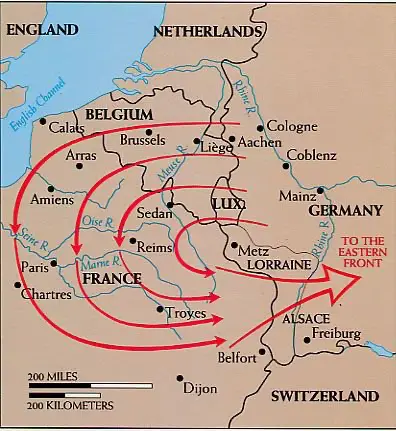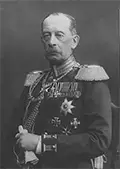The Schlieffen Plan: German Blueprint for WWI Success
The Schlieffen Plan was a blueprint for success for Germany during the First World War. The German high command followed it to a certain extent, Alfred Graf von Schlieffen was chief of the German chief staff in the early 20th Century. Schlieffen proposed this plan in 1905, in the wake of Japan's victory over Russia. The idea was to avoid a two-front war by knocking one enemy out before the other could fully prepare. Like many soldiers down through the centuries, Schlieffen was fascinated by the daring yet very successful double envelopment tactics deployed by the Carthaginian general Hannibal in his destruction of multiple Roman legions at the Battle of Cannae, on Aug. 2, 216 B.C. On that day, the following happened:
What Hannibal's troops did was what Schlieffen wanted his forces to do, envelop the French army in a lightning strike, using overwhelming force, and end any possible French involvement in the war before France could get help from either of its allies, Russia or the United Kingdom. To that end, the Schlieffen called for four army groups, the Bataillon Carrê/, to gather on the right of the line and then disperse, splitting into pursuit of four objectives:

This plan, executed in that particular manner, would result in a German achievement of a French surrender in six weeks, Schlieffen reasoned, based on the fact that the main French force was concentrated on the France-Germany border. He also specified that his attacks were to be preemptive strikes. In 1905, France was distracted by a crisis in Morocco and Russia was still smarting from its defeat at the hands of Japan. Germany's leader, Kaiser Wilhelm II, was very much aware of Japan's victory over Russia and with Japan's alliance with the United Kingdom. The Kaiser didn't want to provoke France's age-old ally, the U.K., without enough of a force for defense, especially because the Schlieffen Plan called for German troops to march through not only neutral Belgium but also neutral Luxembourg and neutral the Netherlands. The German Chancellor, Bernhard von Bülow, agreed with the Kaiser. Also opposing the Schlieffen Plan was the German Navy, which wanted more battleships and more naval forces in general. Schlieffen challenged his superiors' resolve and was removed for his efforts. His replacement, Helmuth von Moltke, modified the Schlieffen Plan and then implemented the modified plan when World War I began. A main part of the modification was a reduction in the size of the German army doing the invading. Schlieffen's doctrine of overwhelming force, therefore, did not come into play. Belgium's army proved much more resilient than any European power, especially Germany, had predicted. As well, Russia mobilized its forces more quickly than Germany expected, and the German command shipped a large number of troops east to confront Russia, leaving the Schlieffen Plan to bog down in northern France. The German Army outran its supply lines and was unprepared for the joint French-U.K. counteroffensive at the First Battle of the Marne. The two-front war, which the Schlieffen Plan had been designed to avoid, had started. |
|
Social Studies for Kids
copyright 2002–2024
David White



 but a combination of factors (not the least being a number of modifications) led to the thwarting of a quick victory.
but a combination of factors (not the least being a number of modifications) led to the thwarting of a quick victory. Carthaginians steadily gave up ground, collapsing their center in the wake of the Roman assault.
Carthaginians steadily gave up ground, collapsing their center in the wake of the Roman assault.
